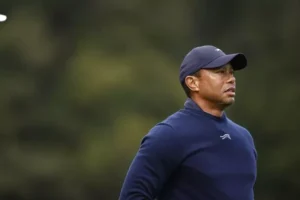Josh Allen Announce his resignation from Buffalo Bills and furthermore explain decision..
The Buffalo Bills had recently signed “Mike Mularkey,” a young offensive coordinator from the Pittsburgh Steelers, as a replacement for Gregg Williams when he left the team. since his name was that. Most likely, it still is. After a 9-7 season, this notorious Buffalo team was forced to play a “win-and-in” game against the Pittsburgh Steelers to finish the season. They were defeated. To spares. Almost everyone was resting for the Steelers, who were a 1 seed. A victory would have equaled the New York Jets’ overall record, forced a tiebreaker against Pittsburgh as a common opponent, and sealed the deal due to a split division historical importance.
In recognition of Buffalo (also known as Mularkey made many changes, but one of his biggest decisions was to keep defensive coordinator Jerry Gray on Williams’ staff. The team’s offensive scheme was an Erhardt-Perkins plan, and its defensive scheme was still 4-3. Tom Clements was appointed to be the offensive coordinator by Mularkey.
The methodology of the offensively inclined head coach didn’t help Buffalo’s offense, which finished 13th in the league with an average of just 1.73 points per possession. When driving to a score of 32.1%, they maintained the same position. Buffalo was 18th in the league in terms of having turnovers on 14.4% of drives. There were 17 ball losses that way and 12 fumbles, thus the main issue here was intercepting messages.
1.37 points were allowed per drive by the defense, ranking them seventh in terms of point prevention. They were 12th in the league in allowing scoring on 27.3% of drives. At the third-best rate in the league, Buffalo’s ball-taking efficiency was astounding. 19.3% of the drives for the Bills resulted in a takeaway. There was a lot of pressure from Buffalo. With 45 sacks overall and third-best rate, the team finished fourth.
Before joining the Dallas Cowboys, this was Drew Bledsoe’s last season in Buffalo. I bring up the Cowboys because Bledsoe proved in his first season there that his 2004 season in Buffalo was below par. In comparison with previous years, it was largely good but could have been better.
Willis McGahee made his debut at running back and did not disappoint. Travis Henry, who was also OK, provided support for him. Mike Williams was the most well-known member of the offensive line who contributed to the running and passing game.
Buffalo concentrated on two targets, similar to what I’m going to do, for receiving threats. Lee Evans, Eric Moulds. While the latter was in his rookie year, he had a fantastic debut season. Evans outperformed Moulds in terms of targets, touchdowns, catch rate, and yards per target. Just to be clear, I’m not saying that Moulds had a poor year of investment.







